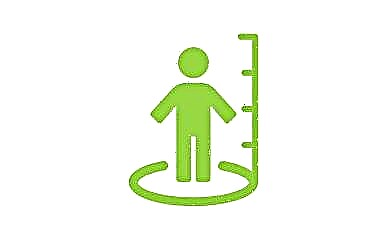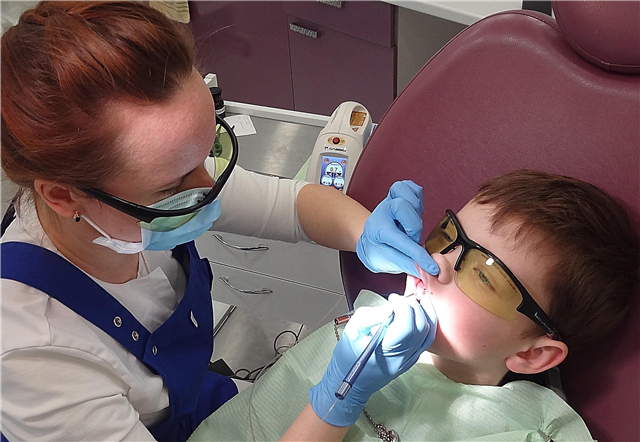
The approaching season of viral infections is alarming for many mothers who want to protect their son or daughter from the flu and colds. That is why in the autumn-winter period there is an increased demand for antiviral drugs, which include Kagocel.
How does such a drug affect the child's body and does it harm? Is it allowed to give it to small children, for example, under a year? Is such a drug used for prophylactic purposes and with what drugs can it be replaced if necessary?
Release form
Kagocel has been produced by the domestic company Nearmedic Plus since 2003 only in tablet form. Syrups, capsules, powders, ampoules and other forms of the drug are not produced.
There is also no separate pediatric form of medication. Kagocel tablets have one dosage for all ages, and depending on the purpose of use and the patient's age, only the dosage regimen, the number of tablets per dose and the duration of the drug use change.

The characteristics of the tablets are white-brown color, round shape, the presence of brown inclusions. One pack can contain 10, 20 or 30 such tablets. For children, the smallest package is most often bought, since it is quite enough for one course of treatment, and for several weeks of preventive intake.

Composition
The active ingredient of the drug is called Kagocel, which is why the tablets are named. This synthetic compound is obtained through the fusion of plant molecules with nanopolymer molecules and is presented in a dosage of 12 mg in one tablet. In addition, the compounds in the drug are calcium stearate, potato starch, crospovidone, lactose monohydrate and povidone. All these additional substances are considered harmless, but in some children they provoke allergies, so it is important for mothers of children with allergies to know the composition of any medications.
Now let's listen to the pediatrician regarding the Kagocel drug.
Operating principle
The medication is referred to as antiviral agents, since Kagocel has the property of activating the production of alpha and beta interferons. These substances have a rather strong antiviral activity, so they are synthesized in the human body during the immune response to a viral attack. The drug stimulates almost all cells of the immune system - B-lymphocytes, macrophages, granulocytes, T-cells and others.

Taking Kagocel has the following effect:
- Strengthens the body's defenses;
- Restores immunity;
- Accelerates the death of infectious agents;
- Blocks the multiplication of viral cells;
- Resists the formation of pathologically altered cells.

The maximum level of interferons is noted in the patient's blood 48 hours after taking a single dose of Kagocel. Interferons produced in response to drug use circulate in the bloodstream for up to 4-5 days.
The drug itself penetrates the liver, lungs, spleen, lymph nodes and other organs. Most of the medication leaves the patient's body after 7 days, mainly with feces. Only 10% of the drug is excreted by the kidneys, therefore, diseases of this organ do not affect the use of Kagocel.

The drug does not have a toxic effect and does not accumulate, and the greatest effect from its use is noted in situations where treatment is started in the first 3-4 days of an infectious disease. If the tablets are used for prophylaxis, they can be drunk at any time, including the period after direct contact with a sick person who secretes viruses.

Indications
Kagocel is prescribed for ARVI, herpes, influenza and other diseases caused by viruses. This drug is in demand in the treatment of angina, laryngitis, bronchitis and other diseases, if their cause is a viral infection. In addition, it can be prescribed as part of the complex treatment of rotavirus or enterovirus infection. The medication is also used to prevent infection with influenza viruses, rhinoviruses and other pathogens of acute respiratory infections.

And now let's listen to Dr. Komarovsky about children's acute respiratory infections and acute respiratory viral infections.
From what age is it allowed to take?
In pediatrics, Kagocel is used in children over 3 years old. This medicine is not recommended for younger children (for example, if the child is only 2 years old). But even at the age of 3-5 years and older, one should not engage in self-medication with Kagocel. Before treatment with any antiviral drugs, you should consult a pediatrician to clarify whether there really is an indication for such therapy.

Contraindications
The drug should not be taken:
- Children who have an intolerance to any of its ingredients.
- Babies with glucose-galactose malabsorption.
- Small patients with a lack of lactase.
- Adults during the period of gestation and breastfeeding.

Side effects
As with the treatment of many other drugs, an allergic reaction may occur when using Kagocel. Apart from allergies, no other negative effects of these pills are mentioned.

Instructions for use and dosage
The tablets should be swallowed with water. It is not recommended to chew the medicine, and meals do not affect the regimen of drug use. For therapeutic purposes, the following Kagocel regimen is used:
- For children 3-6 years old, the medication is prescribed in a 4-day course. In the first two days, the child is given 1 tablet twice a day, and then for two days the child takes one tablet once. In total, at this age 6 tablets of Kagocel are given for the entire period of treatment.
- If the child is over 6 years old, then a four-day course is also assigned to him for treatment, however, the frequency of admission is different and the course dose will be higher. A single dosage is one tablet. On the first and second day of admission, the little patient is given it three times a day, and on the third and fourth day - twice. In total, the child receives 10 tablets of the drug in 4 days.

In order to prevent viral infections, the medication in childhood is prescribed in a seven-day cycle. On the first day of treatment, a child over three years old is given 1 tablet of the drug per day, on the second day - one more tablet of the drug once, and then for five days Kagocel is not taken, after which the cycle is repeated. The duration of such prophylactic use of a medication can be up to several months.

Overdose
Although Kagocel is considered a safe and non-toxic drug, accidental intake of several tablets of such a drug at once can lead to abdominal pain, dizziness, severe nausea, and other signs of malaise. Such an overdose requires the appointment of copious drinking and the induction of vomiting.
Interaction with other drugs
Together with Kagocel, it is allowed to use other antiviral drugs. This drug also works well with antibacterial agents and immunomodulatory medications, enhancing their effectiveness.

Terms of sale
To purchase a package of Kagocel in pharmacies, a prescription from a doctor is not required. The average price of 10 tablets is 220 rubles.

Storage conditions and shelf life
Keep Kagocel at home away from sunlight and moisture. The medicine should not be freely available for small children, and the storage temperature should not exceed +25 degrees. If the shelf life of the tablets, which is 4 years, has expired, it is absolutely impossible to give such a drug to the child.
Reviews
In most cases, mothers who gave Kagocel to children or took such pills on their own respond well to the medication. They emphasize the effectiveness of the medicine for colds and flu, since the general condition improved after the start of treatment and the disease passed faster. The medication is also praised for a minimum of contraindications, a small dosage and a short course of use.

Obvious side effects in children from this drug, judging by the reviews, are extremely rare. Even allergic children tolerate the drug well. Most parents consider the cost of the medicine to be low, so few people are looking for cheaper medicines. The release form does not cause difficulties for most patients. According to moms, the tablets are easy to swallow and not bitter.
As for the shortcomings of Kagocel, some reviews complain about the lack of its therapeutic effect, which is associated with the action of the drug not on all types of viruses. There are also complaints that after the treatment course for a child under 6 years old, unused pills remain. In addition, some mothers do not trust such a medicine, since its composition has not been fully deciphered.

Analogs
The following drugs with antiviral and immunostimulating activity can replace Kagocel for viral diseases or for their prevention:
- Orvirem. Such a medicine in syrup is allowed for children over 1 year old. Due to the presence of rimantadine in its composition, the drug actively fights against influenza and other acute respiratory infections caused by viruses.
- Amiksin... This antiviral tablet contains tilorone. It is used in the treatment of influenza and other acute respiratory viral infections in children over 7 years old.
- Viferon... The basis of such rectal suppositories is alpha-interferon. The drug is prescribed for ARVI, rotavirus, candidiasis, influenza and many other diseases. It can even be used in premature newborns. The medication is also available in the form of a gel, allowed from birth, and an ointment prescribed for children over a year old.
- Tsitovir-3. This medicine based on alphaglutamyl tryptophan, ascorbic acid and bendazole has an immunostimulating effect, therefore it is used in the treatment of ARVI and for the prevention of influenza.
- Amizonchik... The active substance of this drug is enisamia iodide. The medicine is produced in liquid form (syrup) and is in demand for acute respiratory viral infections in children over 3 years old.
- Cycloferon... Such coated tablets activate the formation of interferons, therefore they help with influenza, herpes and other viral diseases. They are prescribed for children from the age of 4.
- Arbidol. This domestic drug in suspension is prescribed for children over 2 years old, and in capsules and tablets - for children three years and older. At the heart of such a drug is umifenovir, which has activity against coronaviruses and influenza viruses.
- Acyclovir. Such a medicine has properties to inhibit herpes viruses, therefore it is prescribed for chickenpox (severe), mononucleosis and other diseases provoked by herpes viruses. The drug is represented by ointment, powder, cream, tablets and other forms that are allowed for children of any age.

Some mothers choose such homeopathic remedies as Anaferon, Ergoferon, Agri, Aflubin and others as a substitute for Kagocel, but doctors warn that they do not have a sufficient effect on viral diseases. Many of the pediatricians, including Komarovsky, call such drugs ineffective and do not consider them full-fledged analogues of antiviral drugs.



